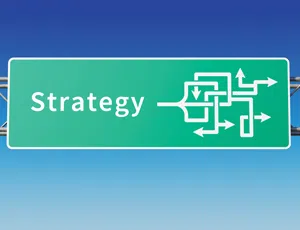The long-term success of your business will be greatly impacted by your ability to recruit and retain the next generation of managers.
Exit planning is the process of an owner obtaining their definition of business independence.
Where are you right now in the process of someday exiting your business? Are you there yet? Have you thought about it? Do you see yourself in the future with your business in some capacity, or perhaps sitting on an Island sipping margaritas — maybe both?
Whatever your dream may be for your future and the future of your business, one common theme is independence ... for yourself and for your business. How is the business going to operate successfully without the owner’s daily management?
In truth, exit planning is preparing the business to live without its owner and the owner to live without their business. Now ask, how does exit planning and business independence blend together?
The explanation: exit planning is a journey to build a strong and sustainable business that does not rely on the owner’s daily management; business independence.
Because exit planning is long-term business planning, allow yourself plenty of time to execute your plan. And, encourage yourself to begin planning for your business independence now, at least 6-8 years before you actually, physically plan to leave.
The reason it takes so long is you are going to need the time to put into place the systems, the processes and the people to successfully operate your company without you.
In recent survey results taken from business owners reflecting their thoughts for planning for their future, currently 71 percent of all business owners plan to leave their companies in some capacity within the next 10 years.
Of those business owners, only about a third (32 percent) have actually discussed exiting their business with their significant other. And, only 15 percent have actually reached out and hired and trained employee(s) to take over the owner’s key business responsibilities and fill the roles of the current owner.
Shockingly, only 8 percent have a clear written exit plan with defined steps for their business.
Overall, 78 percent expect their future exit plan to involve the sale of their business to a third party, family member or key employee(s). This leads to another question; how prepared is your business to be sold?
Of all the businesses that are put up for sale, only 20 percent are sold. And, only about a third (30 percent) of all family owned businesses make it to the next (2nd) generation. While a meek 12 percent make it to the third generation.
These percentages are low, for the simple reason of lack of planning and preparation. Now is the time to move forward to give yourself plenty of time to explore and envision all the potential possibilities, while setting a course for yourself based on what is important to your business and yourself.
As you begin to approach the exit planning process, introduce these four elements into your process to spark your willingness to plan the discussion within yourself and with your business, igniting the energy with planning for your business independence.
Goals
Set goals to help you understand the ways to someday leave your business and ask the questions of yourself to be able to create business independence. Remember, you are the Chief Exit Officer to lead an advisor team to help assist you with both your personal and professional goals. You need to set the vision of where you want to go with your business.
In essence there are only five ways you can leave your business:
- Sell to a third party
- Sell to a family member or co-owner
- Sell to key employee(s)
- Die owning your business
- Liquidate the company
The good news is you can plan for all of them. Take a moment, and think about how you would answer four universal questions to set and plan for your personal life and business goals: How much longer do I want to work in the business? Who would I like to sell/transfer my business to? What is the annual after tax money I will need? What will I do with my life after business ownership?
Cornerstones
Whichever course you are planning on taking, be prepared to steer your ship through four important cornerstones to secure a life path you are certain you want to immerse yourself with — a path which continues your journey, providing financial security and complete fulfillment.
Begin to build your foundation, start to create a plan and take a walk along the path, which will lead to your business independence.
As one of the four cornerstones in the business exit planning process, business independence planning emphasizes the steps that need to be taken in order for the business to become independent from its owner. So as the owner is working on personally becoming independent from their business, their business is doing the same.
Few companies are sold and the vast majority are rejected by Investment bankers, private equity investors and business brokers because businesses are not prepared or have very little or no value without the current owner.
Create a business bucket list involving steps and actions that need to be taken to preserve, protect and promote business value before you can leave. When a business can operate successfully without its owner’s daily involvement, the business becomes something of value to its current owner (by providing freedom) and potential buyers of the business since the company’s success is not dependent solely upon the owner’s efforts and buyers see a strong, stable and independent business.
The long-term success of your business will be greatly impacted by your ability to recruit and retain the next generation of business managers/owners to your company. The majority of closely held business owners are baby boomers between the ages of 50 and 70. The total Baby Boomer generation represents approximately 79 million people. The next generation (Gen X) consists of those currently in the age group from 30 to 50 years old. That generation is only 58 million people.
This significant difference in population between the Boomers and Gen X will have a great impact on future ownership and management of closely held businesses.
With a significant shortage of talent in the next generation due to the generation’s small size, your current management will be the focus of your competitions’ attention as companies look for leaders.
Therefore, it is critical to have a key employee plan that demonstrates how your key people will share in the financial growth of the company they help manage. A business contingency plan asks how will your business successfully operate if you do not return to it tomorrow morning? What may your family encounter?
Loss of Financial Resources. Either by guarantees or loans made by the owner to the business.
Loss of Key Talent. Who will immediately fill the role of the owner? What jobs/tasks does someone need to fill?
Relationships with Customers and Vendors. Who is going to immediately maintain the relationships you have with the customers and vendors?
Impact on Key Employees. Will they stay or go to work for the competition immediately?
Create a business continuity plan and a living will for your business to document your knowledge of the business operations so that all of your experience and insight does not go away, even if you do. As an owner, by having a solid owner’s life plan, you will know what to do with your life after business ownership.
By asking who you are, and what you want to do with your life, you will begin to see a clear and exciting vision of what your life will be.
Execution
What you envision, your ideas and concepts. Be in control of your selling power and to whom and remember to stay true to yourself and the integrity and value of your business. You will need to prove to any buyer that your company has a successful business model, sustainable cash flow, growth potential and minimal risk.
Transition
The transaction is not the end of the plan, but living the life you have envisioned for yourself will be the completion of a successful journey. This is where your life plan comes into play. It’s where you confront the reality of who are you and what you are going to do with your life.
Learn and ask about post ownership and the three components of well-being; prosperity, health and happiness. You will need to look outside of your business to understand what creates happiness and which relationships provide experiences, engagement and meaning.
Become aware of the steps you are taking now to live the life you have envisioned for yourself. Give yourself plenty of time (measured in years), to plan, prepare, execute and, most importantly, get to know yourself.



